Submitted by WA Contents
Deep Forest exhibition dives into the bio-digital processes through architecture and nature
Denmark Architecture News - Nov 28, 2024 - 13:46 2777 views
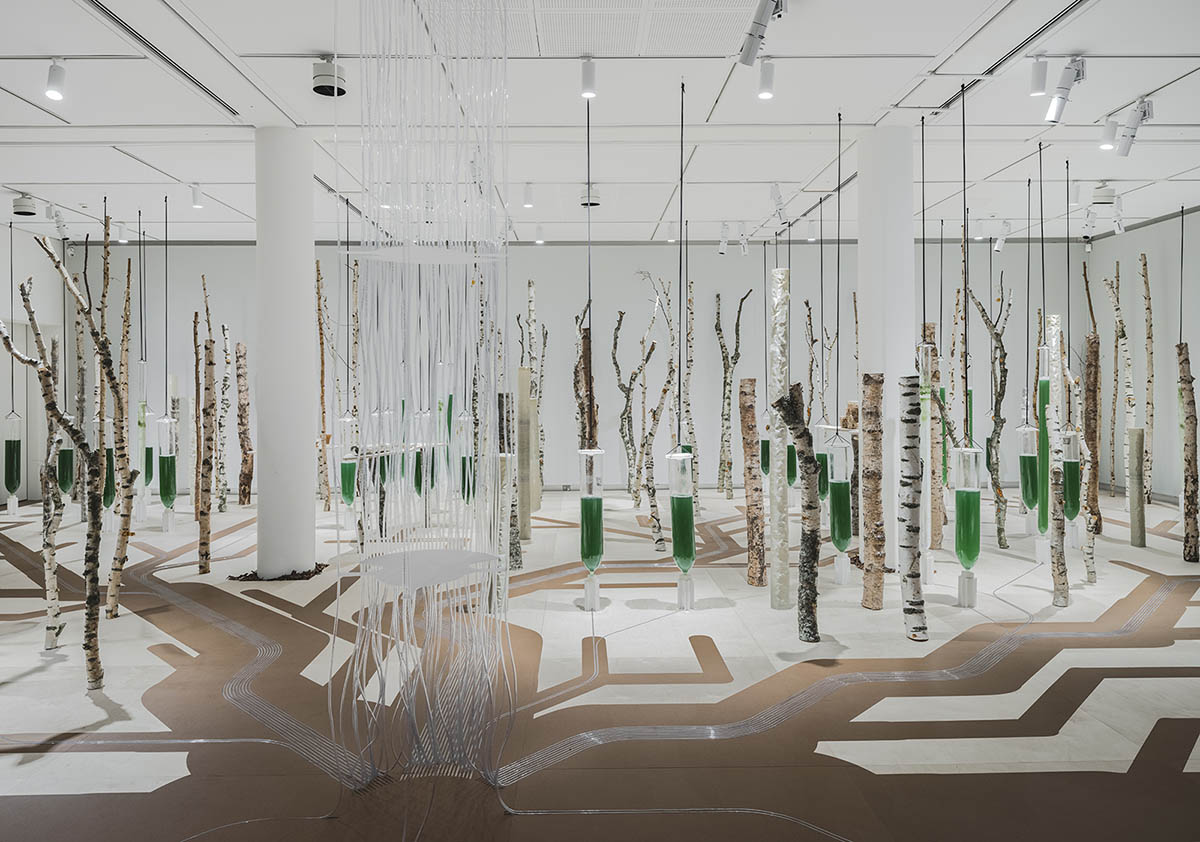
A new exhibition at the Louisiana Museum of Modern Art dives into the bio-digital processes through architecture and nature.
The exhibition, titled Deep Forest, was created by design innovation firm ecoLogicStudio, led by Prof Claudia Pasquero and Dr Marco Poletto.
Deep Forest, created together with academic partner Innsbruck University, is part of the Living Structures exhibition series at the renowned Louisiana Museum of Modern Art in Denmark. Deep Forest will be on show at the Louisiana Museum of Modern Art until March 23rd, 2025.
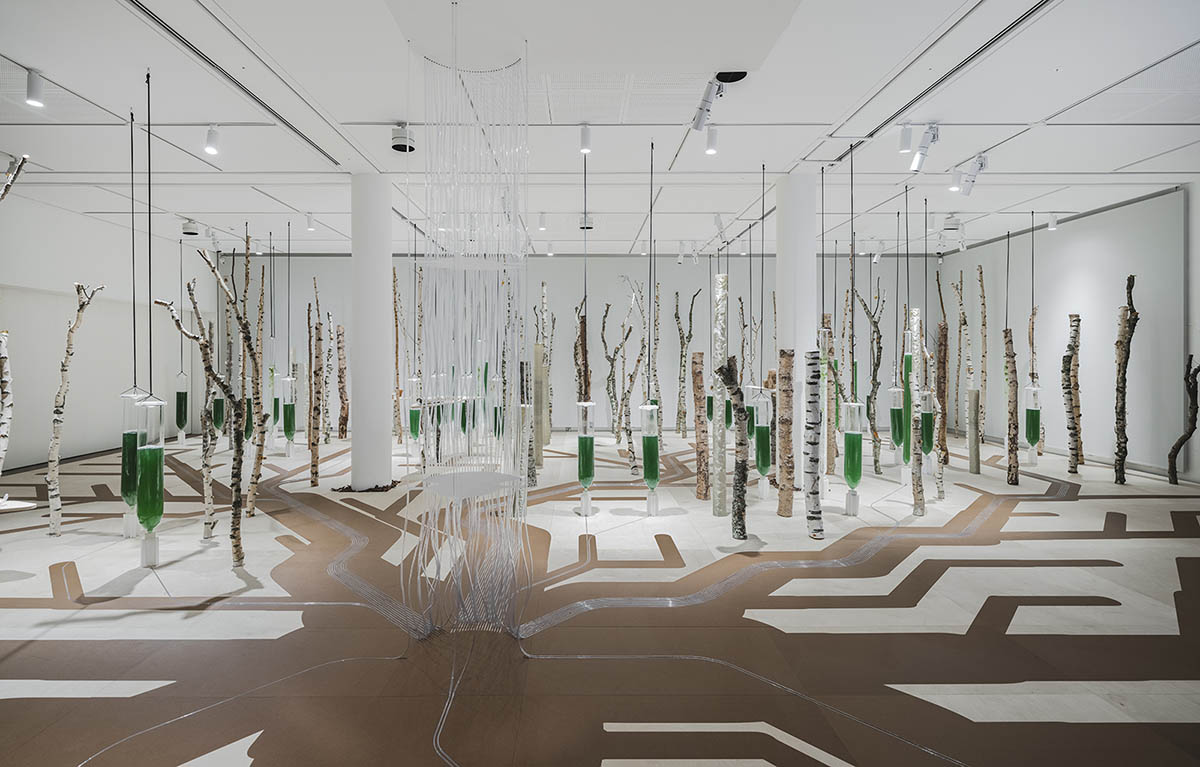
Deep Forest, commissioned by the Danish museum in 2023, reverses the modernist goal of mechanizing nature by celebrating the naturalization of technology and architecture.
Mette Marie Kallehauge and Kjeld Kjeldsen's new series, "Architecture Connecting," includes the exhibition "Living Structures." It highlights the evolution of architecture in the context of the climate crisis and the social, cultural, and political challenges that this reality presents.
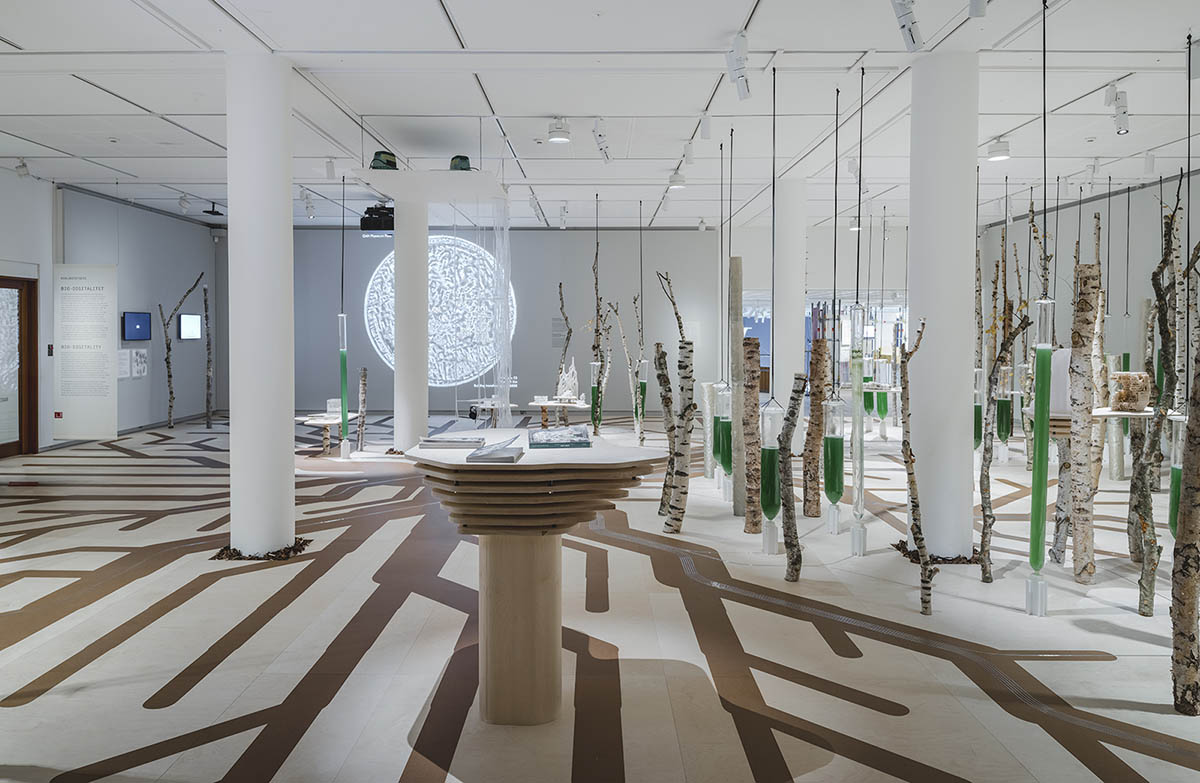
"The forest are cyber-organic networks"
"Diving deeply into a forest means losing oneself into the multiplicity of interconnecting processes that defines its very existence; and with it our own identity. In our contemporary world these processes are biological and digital, as both us and the forest are cyber-organic networks," said Prof Claudia Pasquero, the founder of ecoLogicStudio.
"Like the slime mould greeting visitors at the entrance of the Deep Forest exhibition, it serves as both a woodland fungus and a biological computer—a form of wetware AI infrastructure with the capacity to plan a city," Pasquero added.
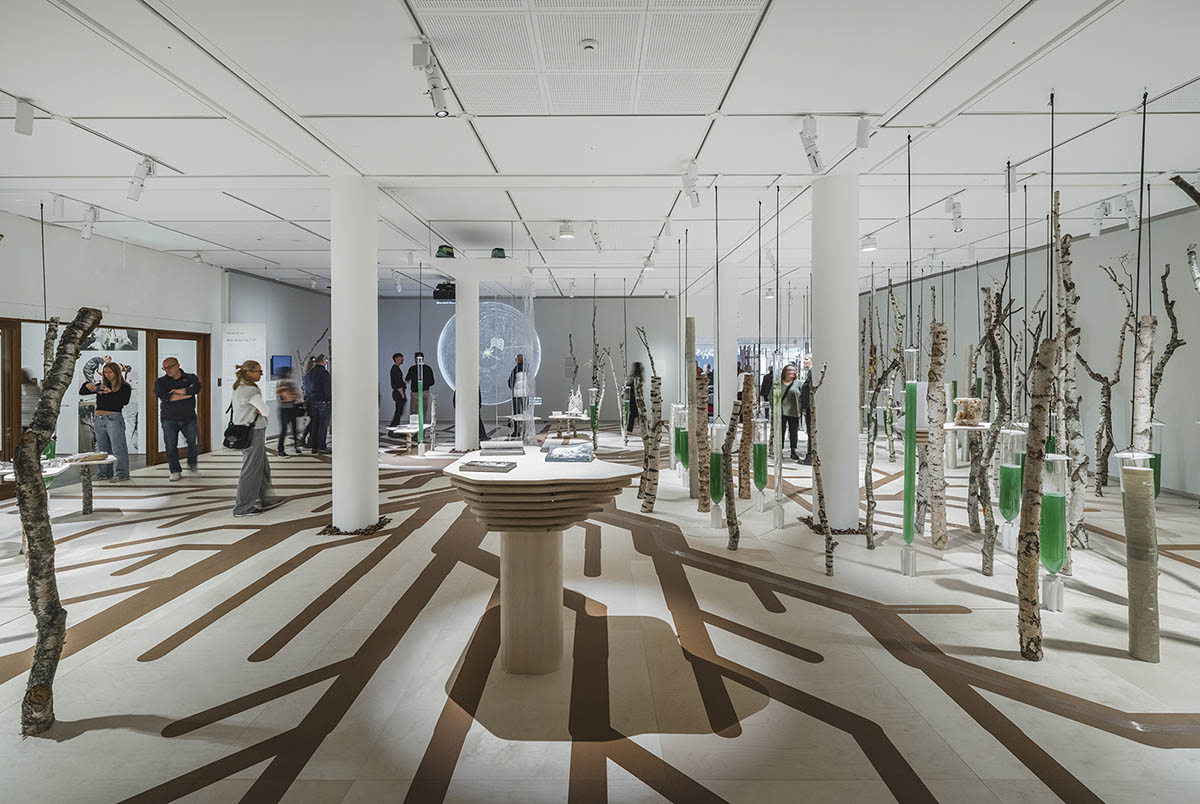
Experience is the only way to fully comprehend the intricacy and interconnectedness of this work, which is why ecoLogicStudio's exhibition at the Louisiana uses the immersive language of spatial design to convey the creative spirit of their 20 years of research and bio-digital design advancements with their academic partners.
The Deep Forest installation, which draws from the museum's distinctive landscape setting, is influenced by the region's territorial diversity as well as the materials that can be gathered and produced locally.
The most important of these is the mycelium, which is the organism that creates the Wood Wide Web, also known as the forest internet.
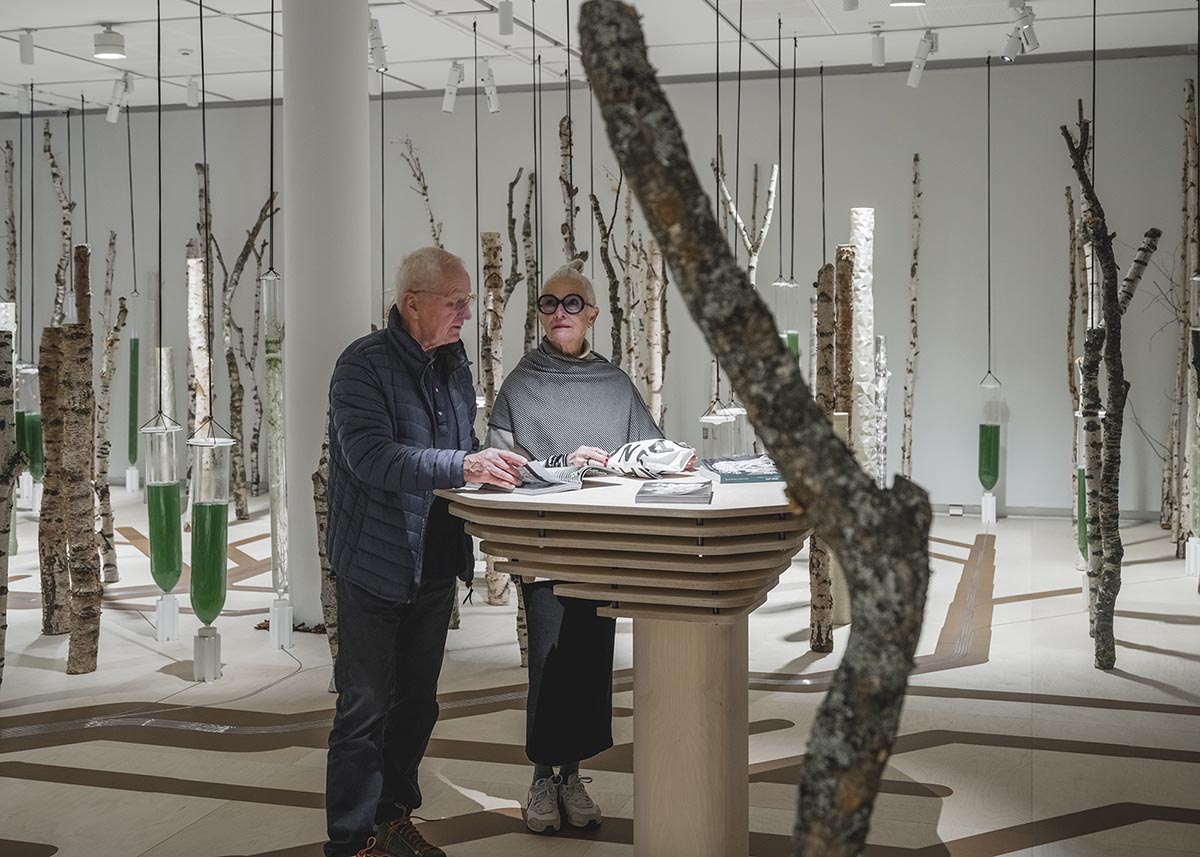
Mycelium controls the exhibition's planar organization of the projects, sets up the photosynthetic reactors' aeration system, and directs visitors along designated routes.
Additionally, it becomes a living architectural material that gives biodegradable columns shape and substance.
Although the uses of mycelium in biodesign are endless, Deep Forest concentrates on its symbiotic relationship with photosynthetic microalgae. The circularity of the forest depends on photosynthesis from both algae and tree leaves, which work together to form lichens that support this interdependent ecosystem.
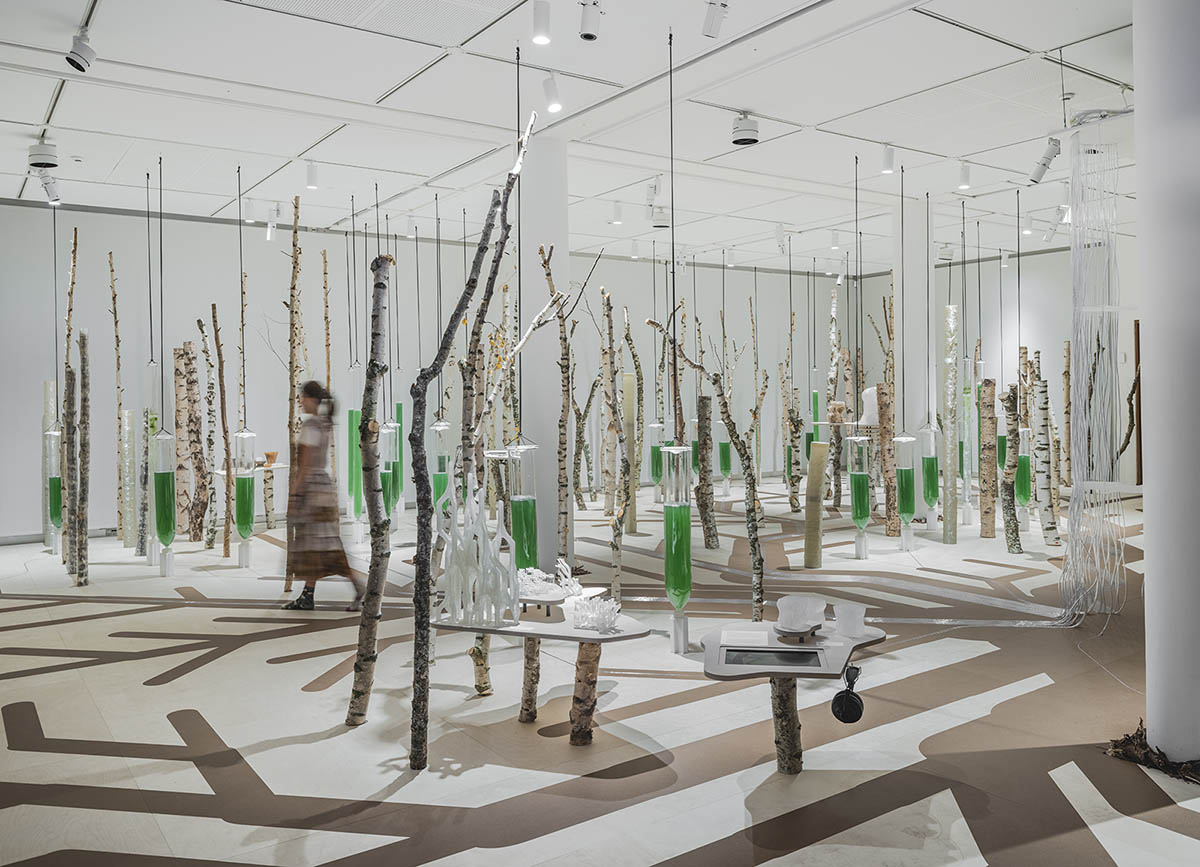
In addition to providing context for the photosynthesizers—the 44 glass vessels containing living cultures of cyanobacteria and seaweeds that provide fresh oxygen and carbon sequestration to the museum's room—102 carbon storers constructed from salvaged birch trunks are home to a variety of fungal species in the exhibit.
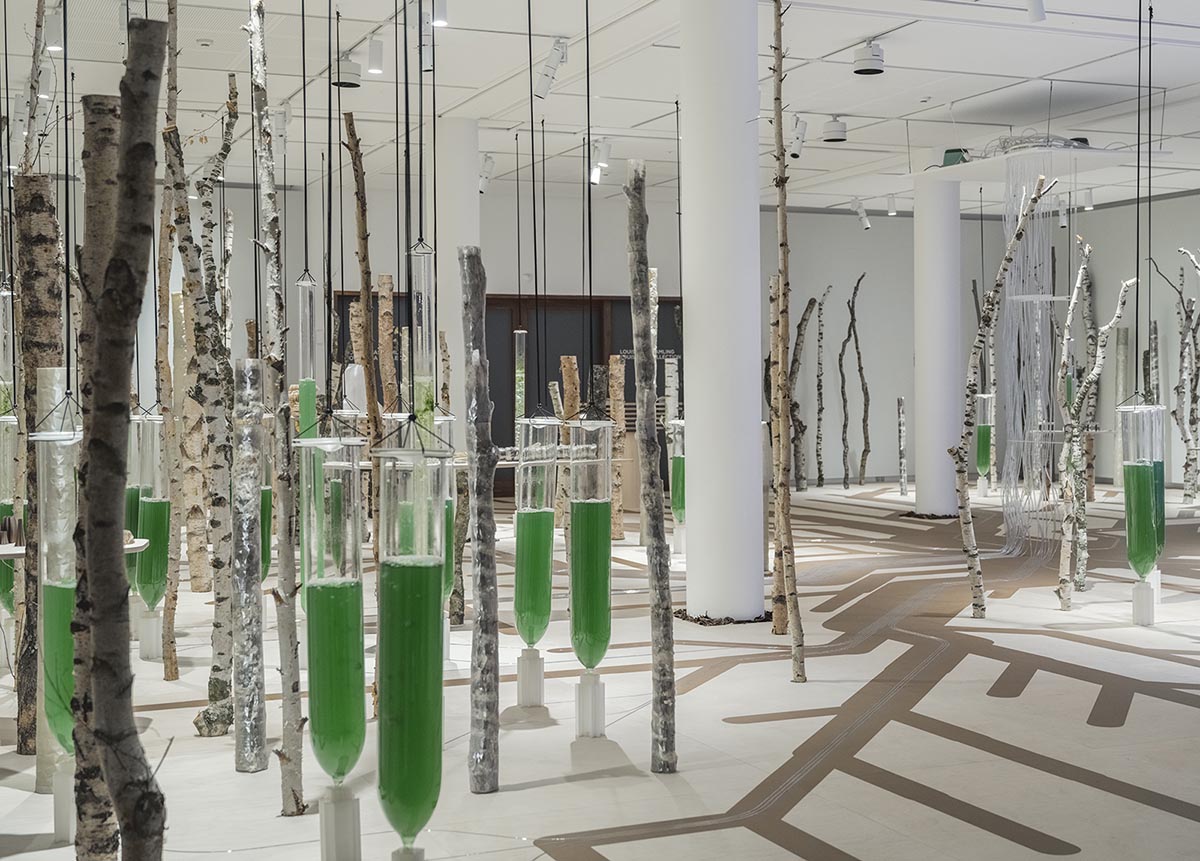
600g of CO2/day, or the equivalent of a small mature forest, is captured from the atmosphere by the 44 photosynthesizers that ecoLogicStudio designed and engineered. Of these, 29 shorter units contain microalgae types of Spirulina SP, while 15 taller units contain macroalgae species typical of the local shores.
Additionally, these supply biomass for 20 biodegraders that were developed at the University of Innsbruck's Synthetic Landscape Lab and 3D printed.
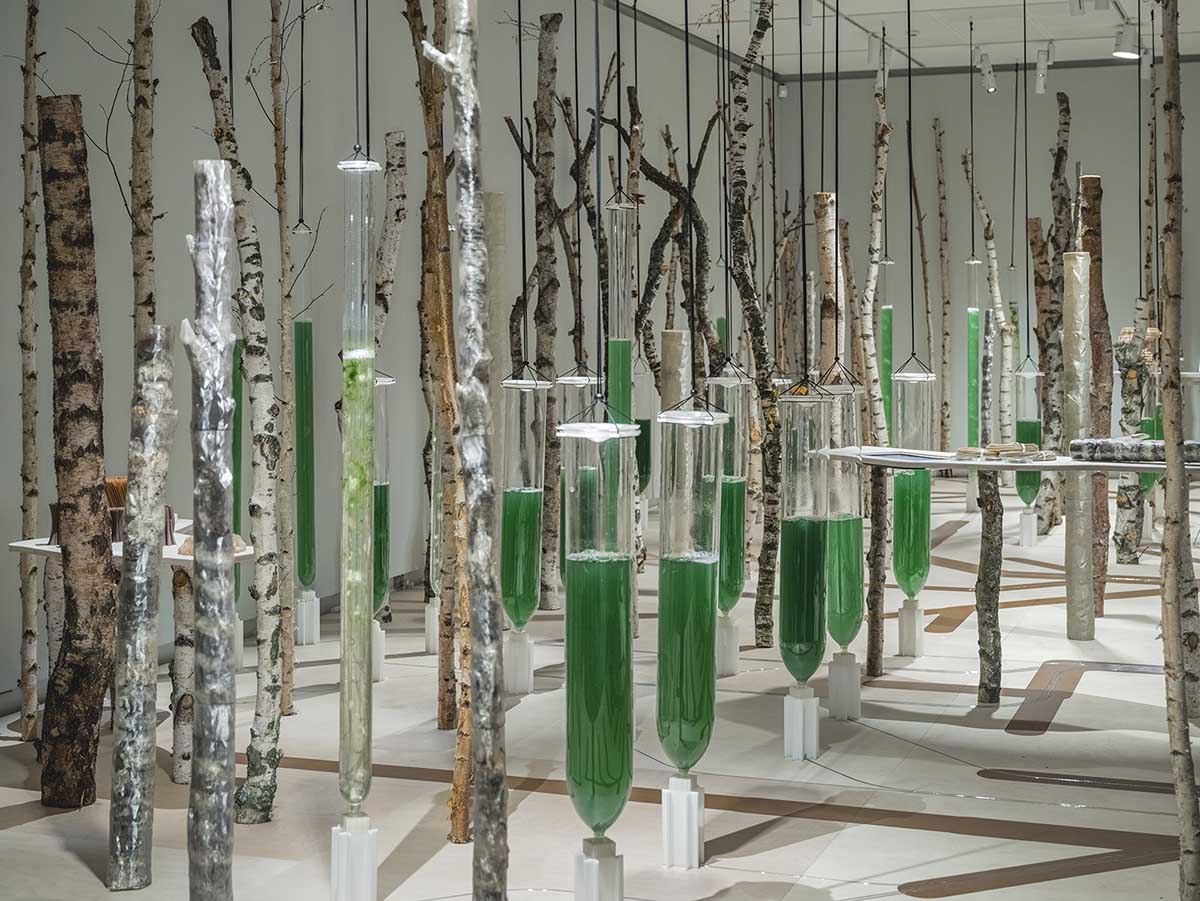
Their infill is composed of 300 kg of spent coffee grounds, and their exterior structure is 3D printed using biopolymer infused with algae.
After being inoculated with colonies of living mycelium, they grow to create a solid synthetic trunk and a new space-filling network while consuming the sugars in coffee grounds.
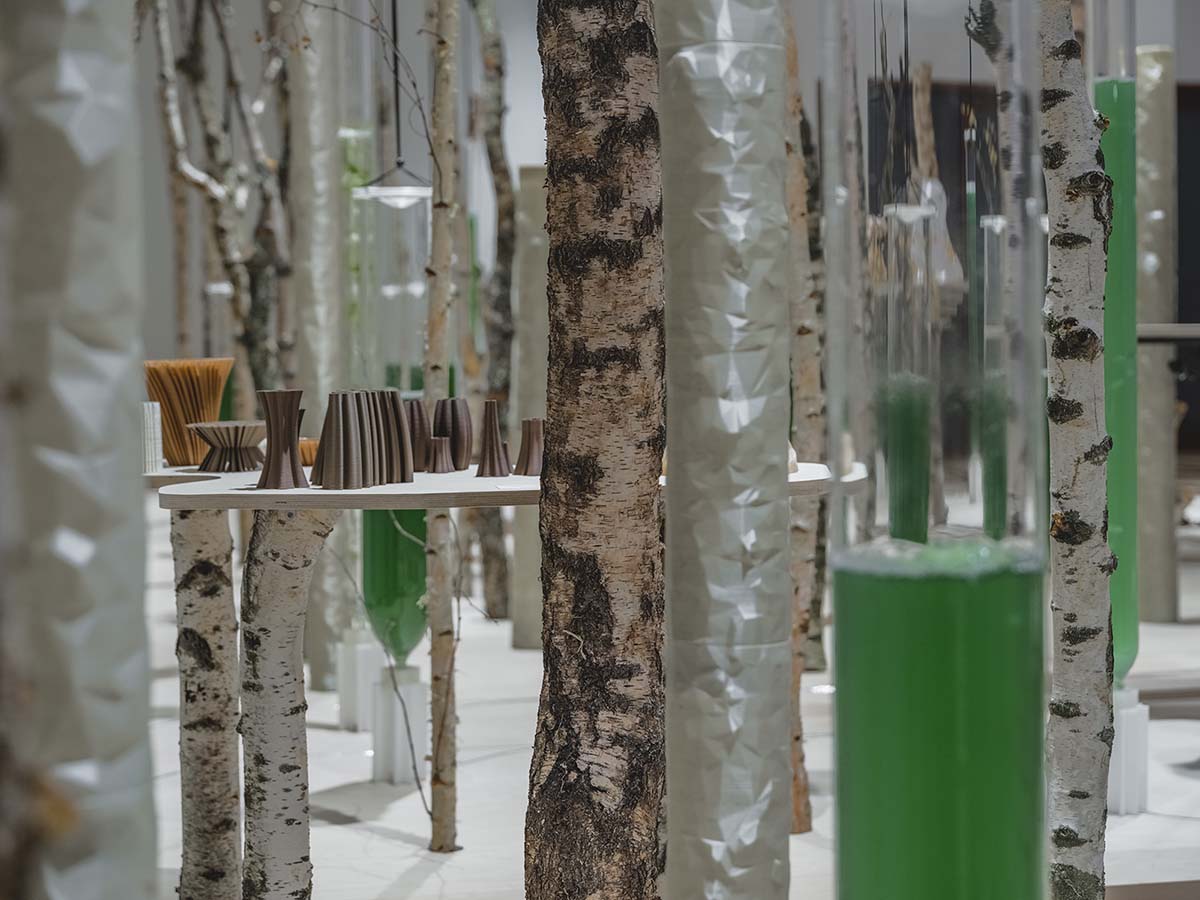
The synthetic mycelium trunks are buried in the ground for up to three weeks as part of the proprietary bio-fabrication process. This gives the mycelium time to fully develop its networks and achieve the desired material and aesthetic consistency.
The trunks can now be removed and dried to gain both aesthetic appeal and mechanical resistance. Fresh mushrooms will occasionally emerge from cracks in the 3D printed bark when certain areas are kept damp to promote the growth of fruiting bodies.
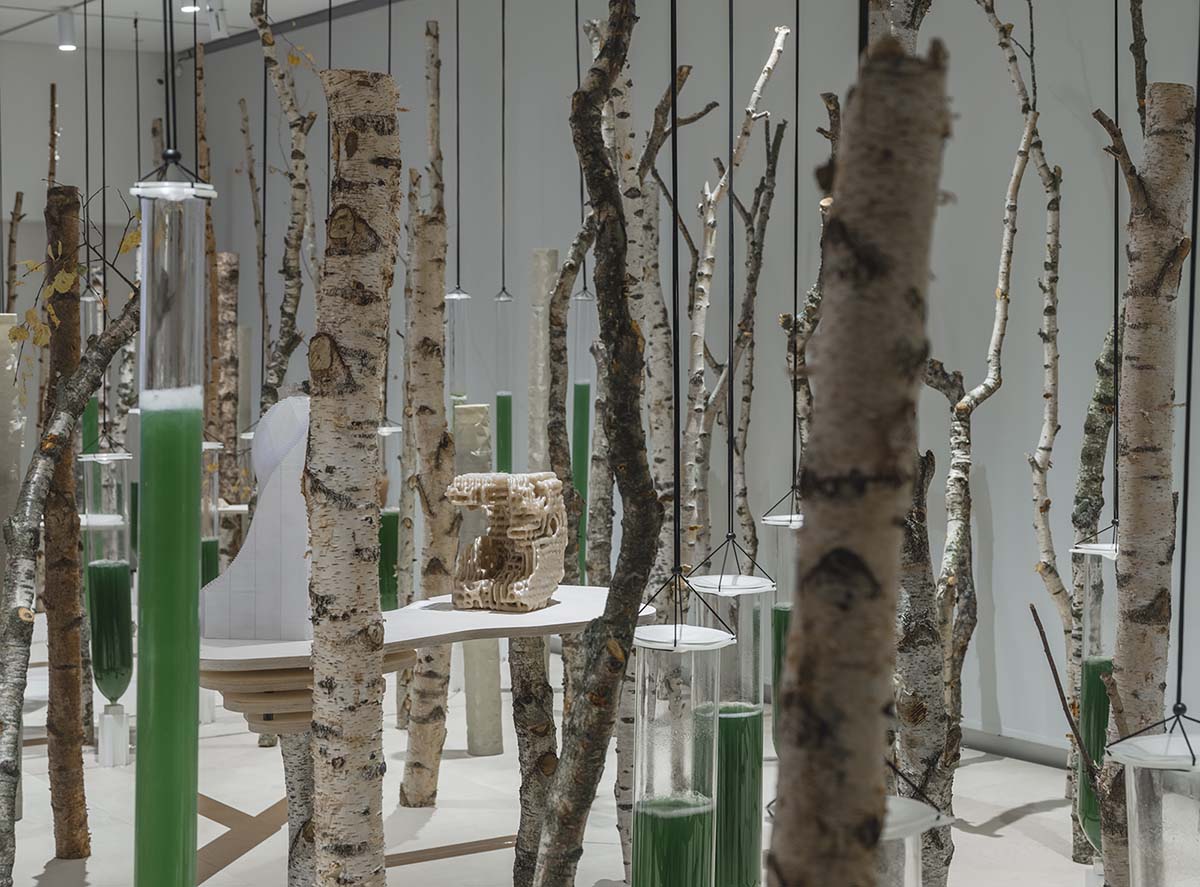
In summary, the micromanagement of photosynthesis as a circular process is given architectural form by Deep Forest. It represents the goal of creating sustainable architecture out of the pollution and waste that are released into the modern urban environment.
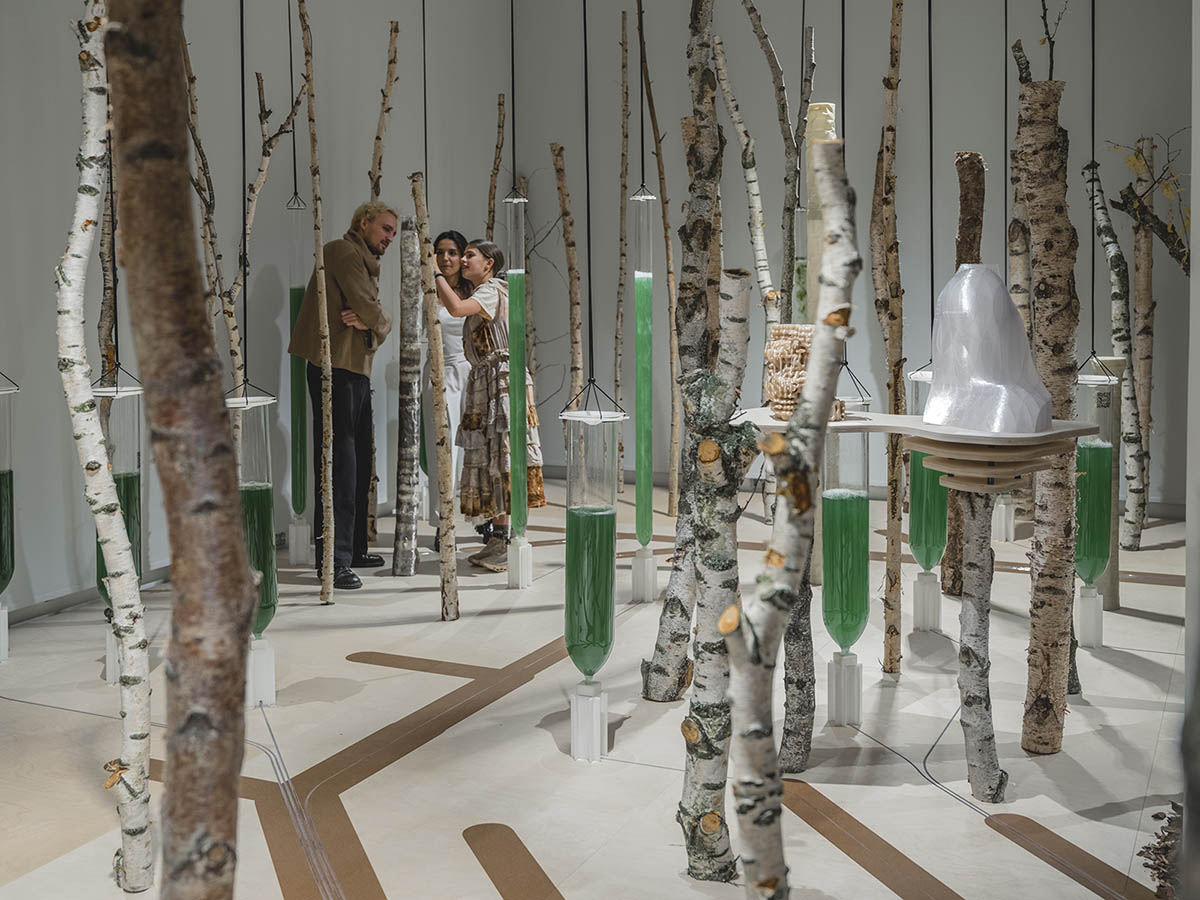
"Photosynthesis is fire in reverse. There is too much fire in the world, so to counteract fire we need more photosynthesis and we need to design it, to customise it," Prof Mario Carpo from its interview with Prof Claudia Pasquero and Dr Marco Poletto recorded for the exhibition catalogue.
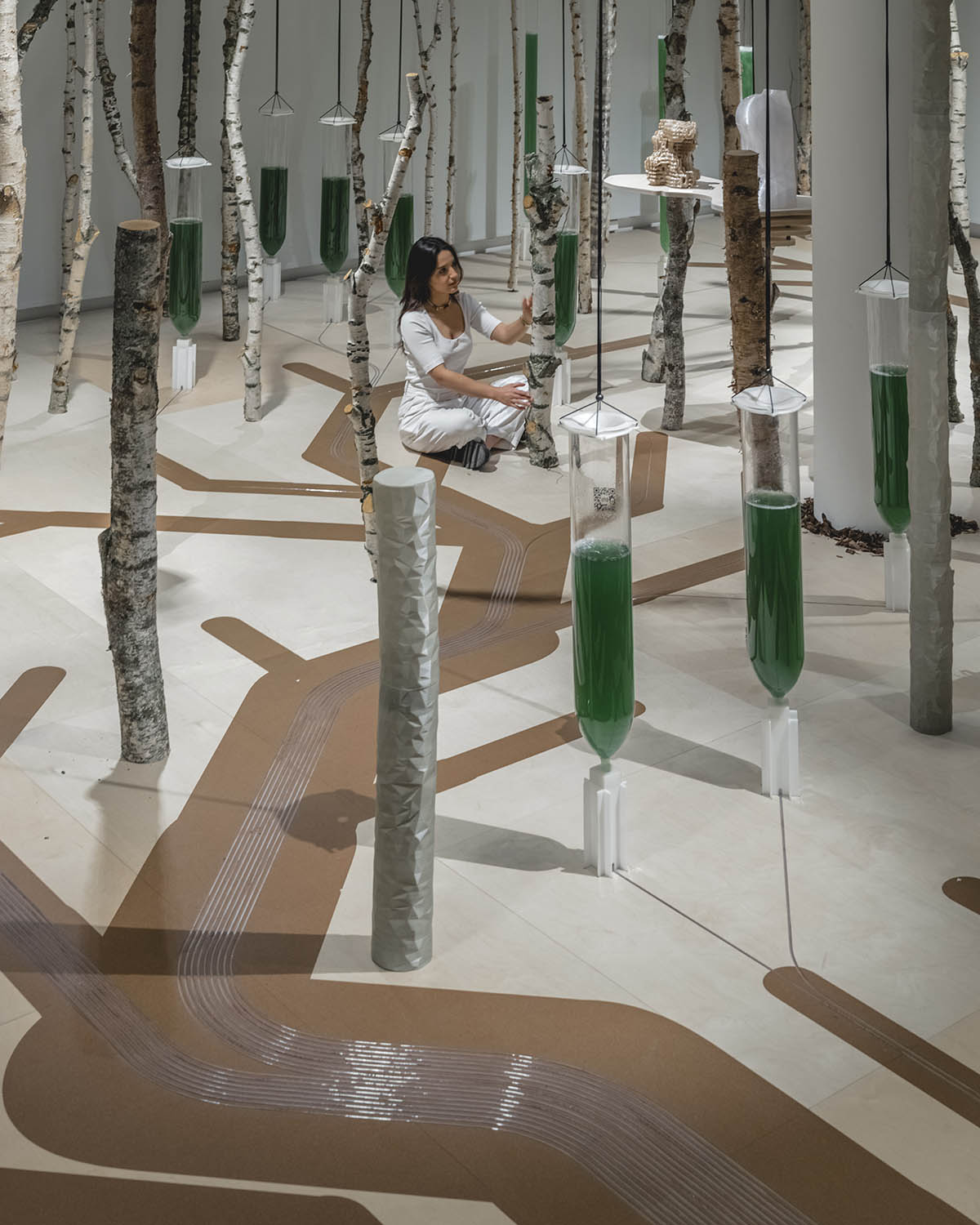
Five themed areas within Deep Forest highlight a range of recent projects that ecoLogicStudio and its academic partners have worked on. Highlights include GAN-Physarum: La dérive numérique, a machine learning algorithm trained to mimic the behaviour of living slime mould, envisioning a bio-digital, autonomous Paris; Tree One, a living sculpture previously exhibited in Korea and China; and the results of research led by Prof. Claudia Pasquero’s students in the Synthetic Landscape Lab at Innsbruck University.
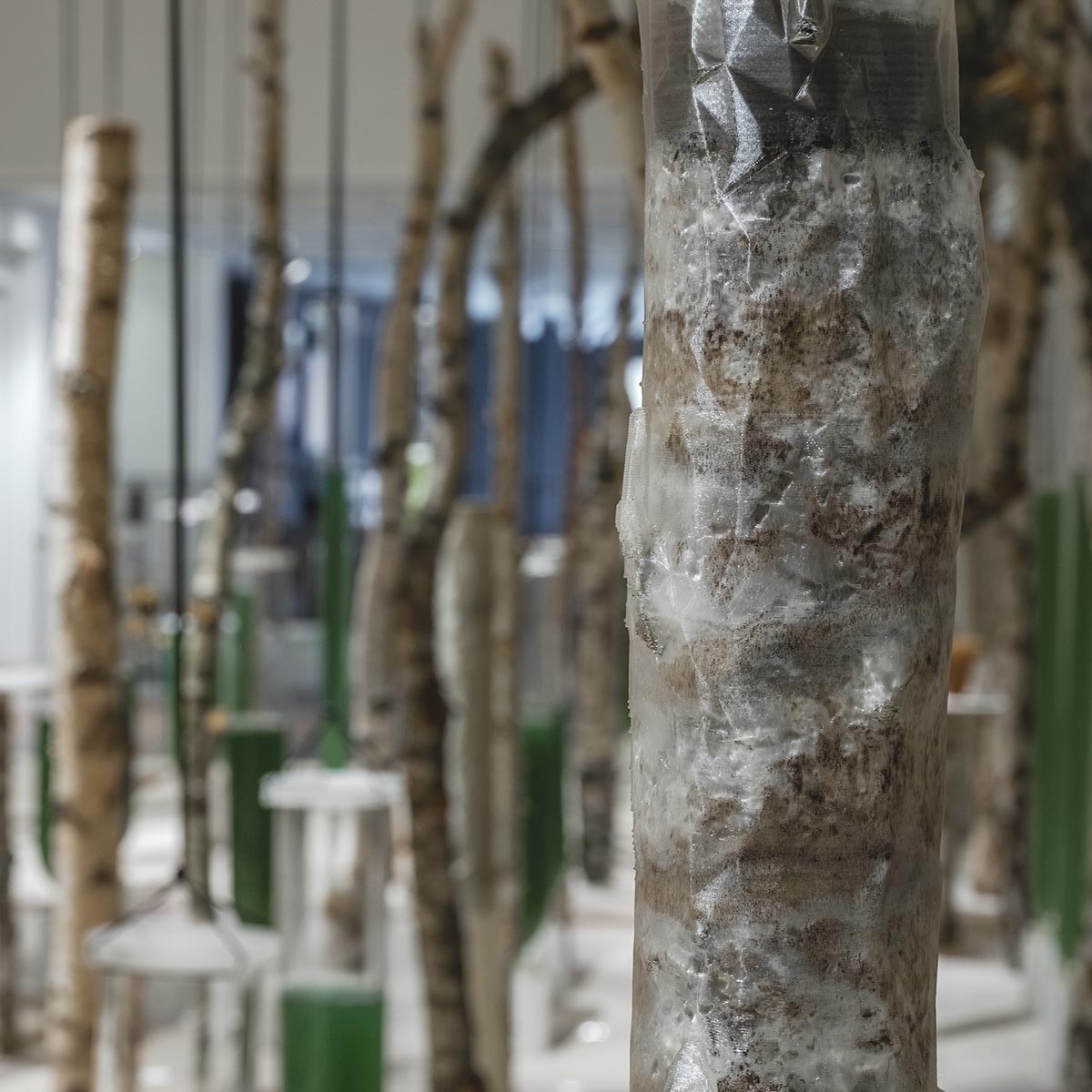
The exhibition also features ecoLogicStudio’s recent book, Deep Green: Biodesign in the Age of Artificial Intelligence, and the bio-digital gardening project H.O.R.T.U.S. XL Astaxanthin.g.
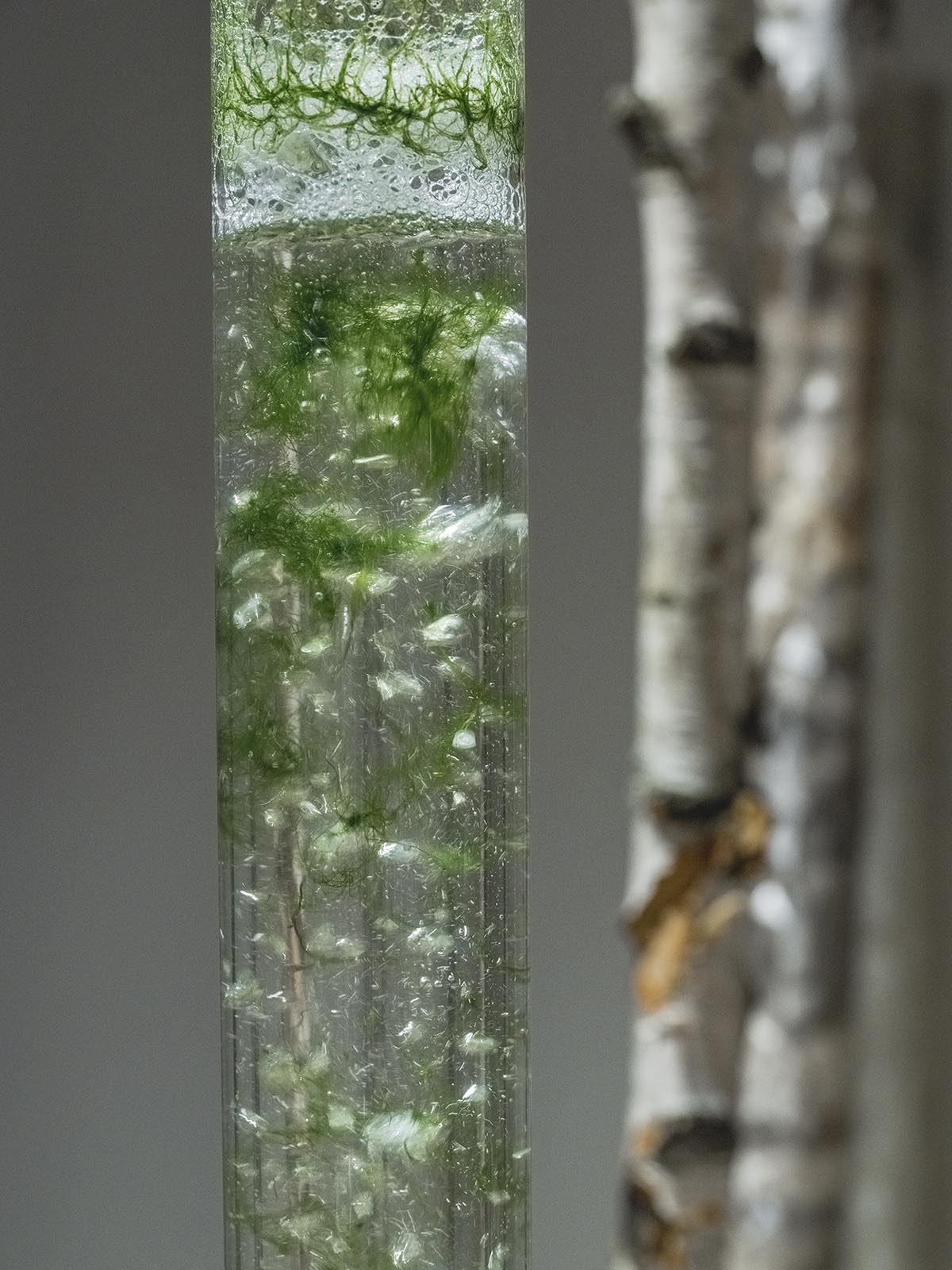
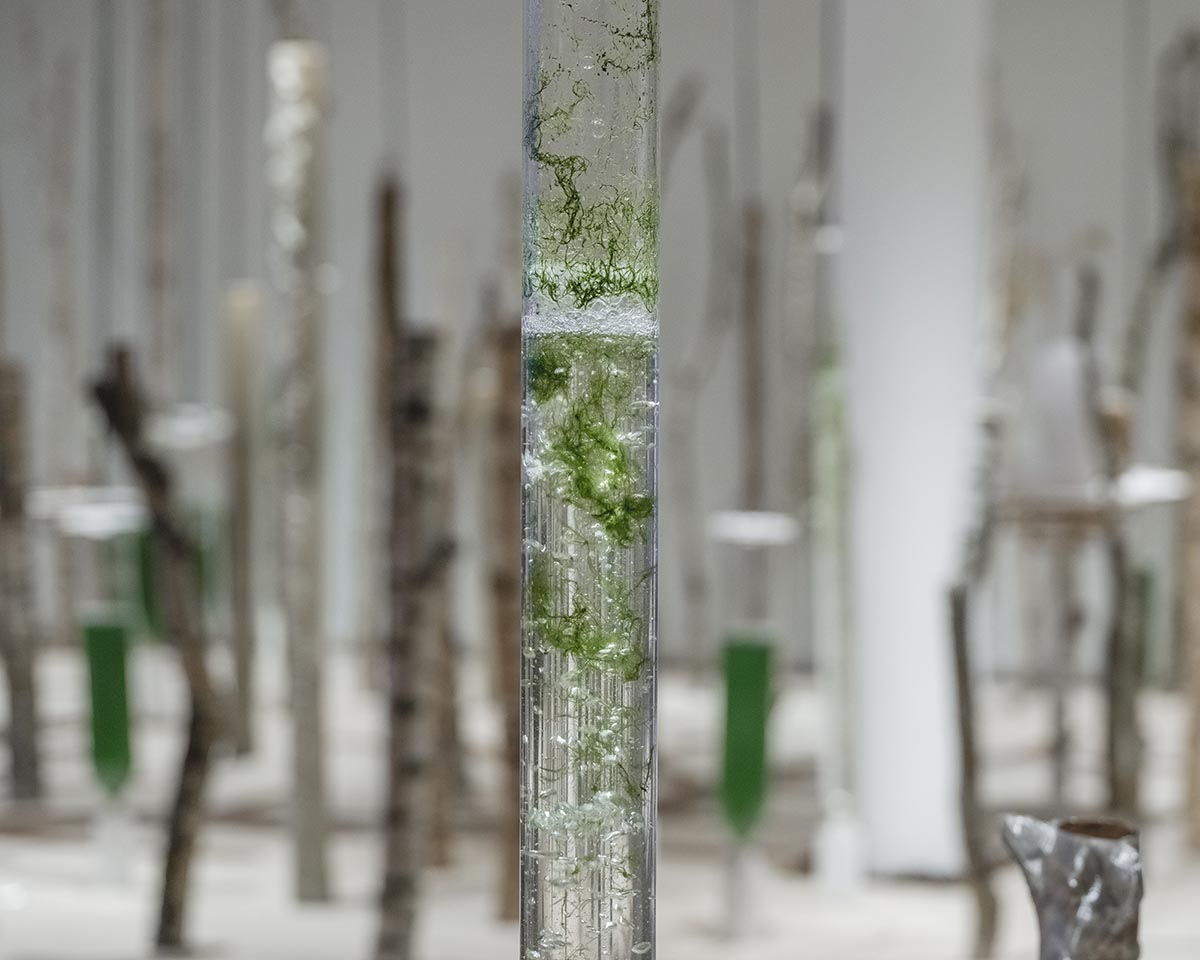
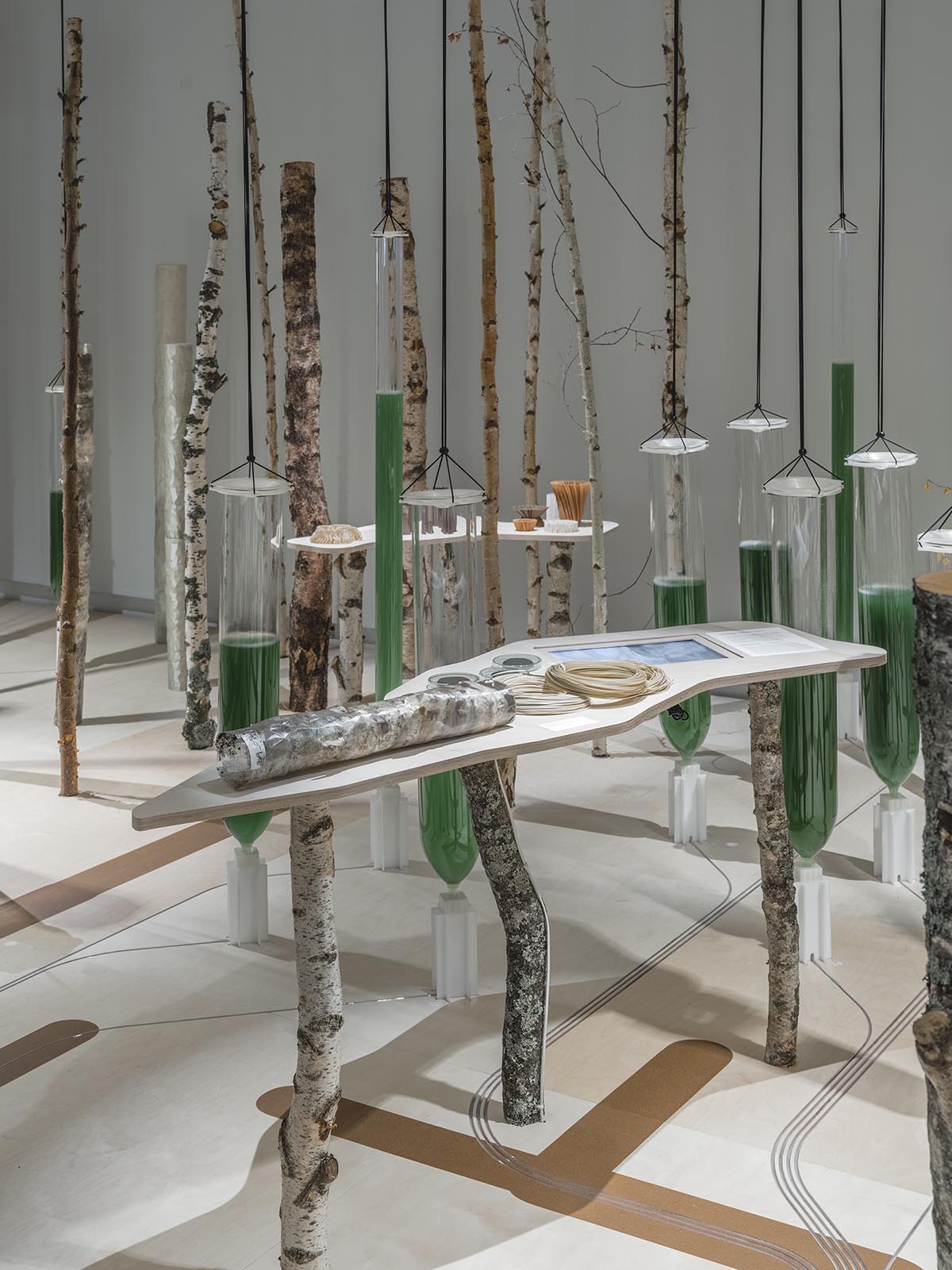
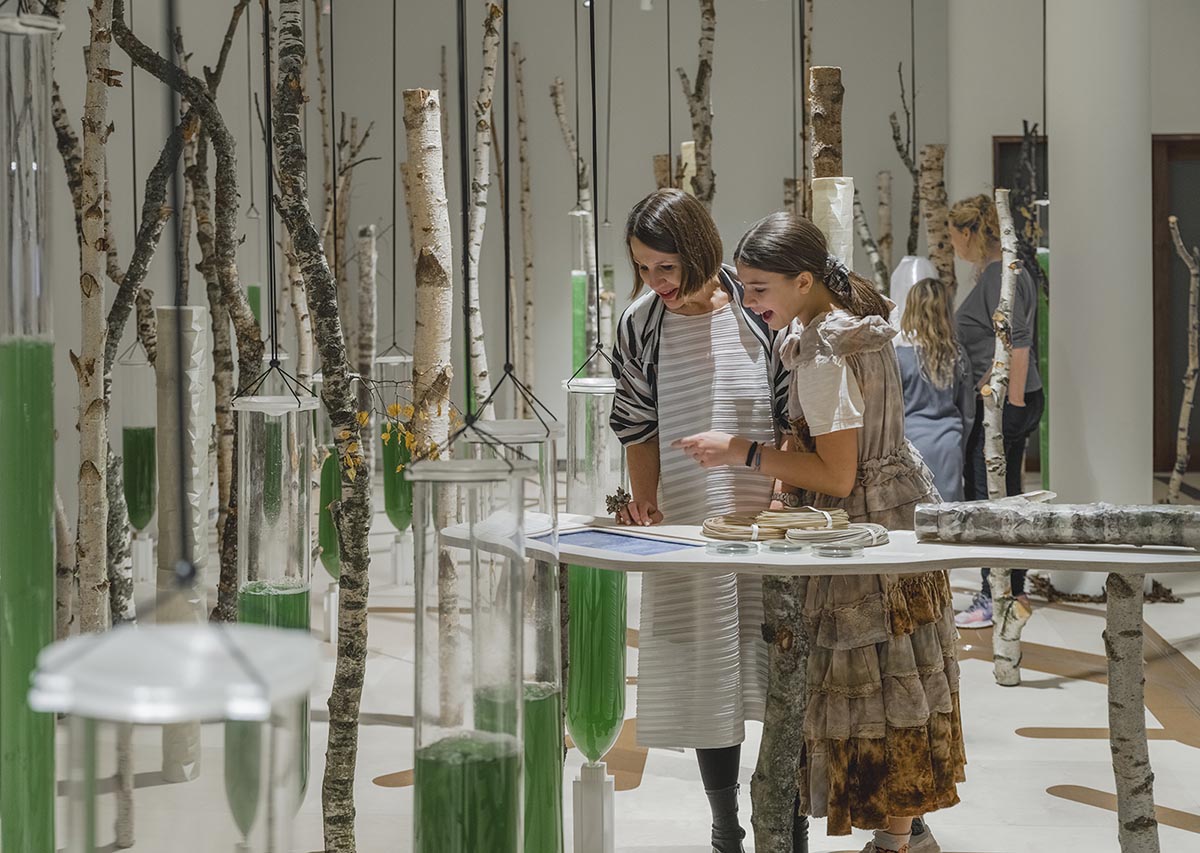
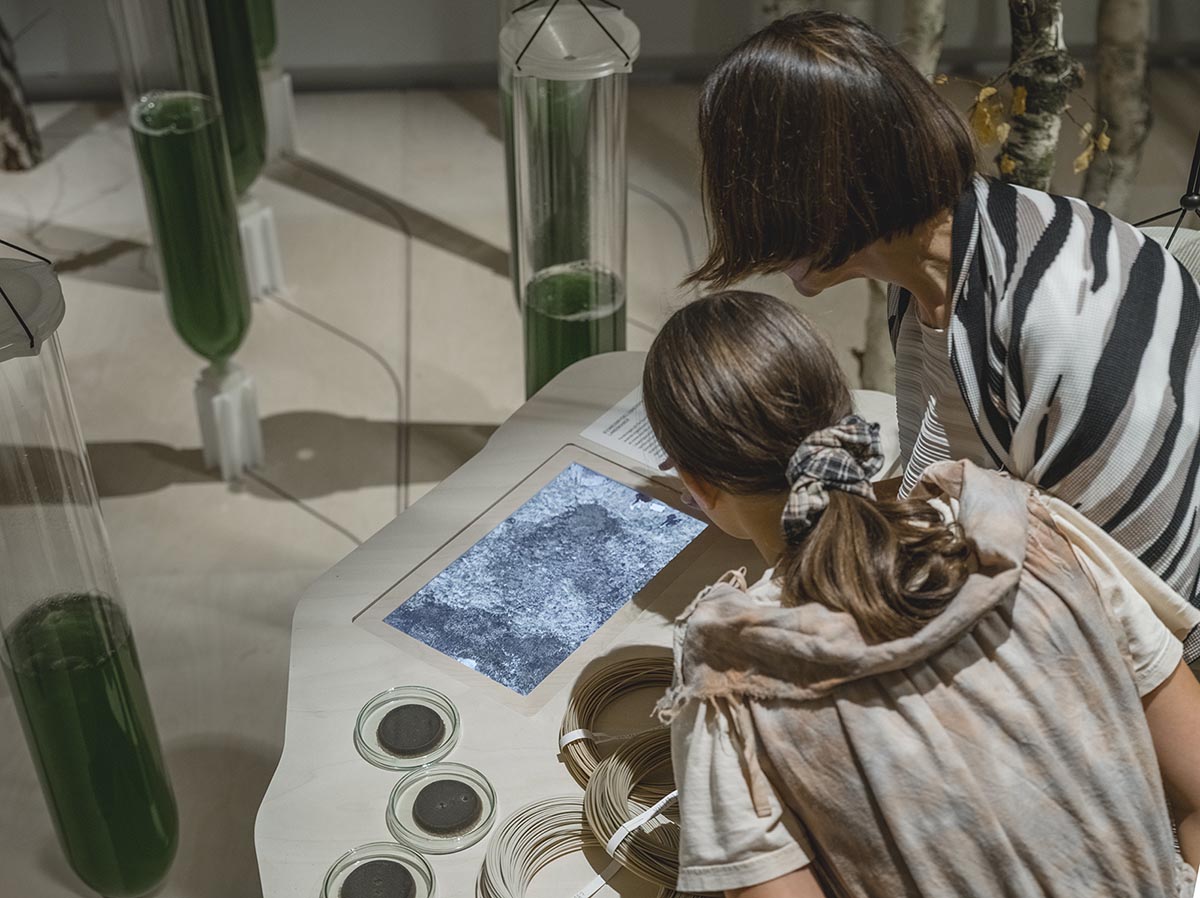
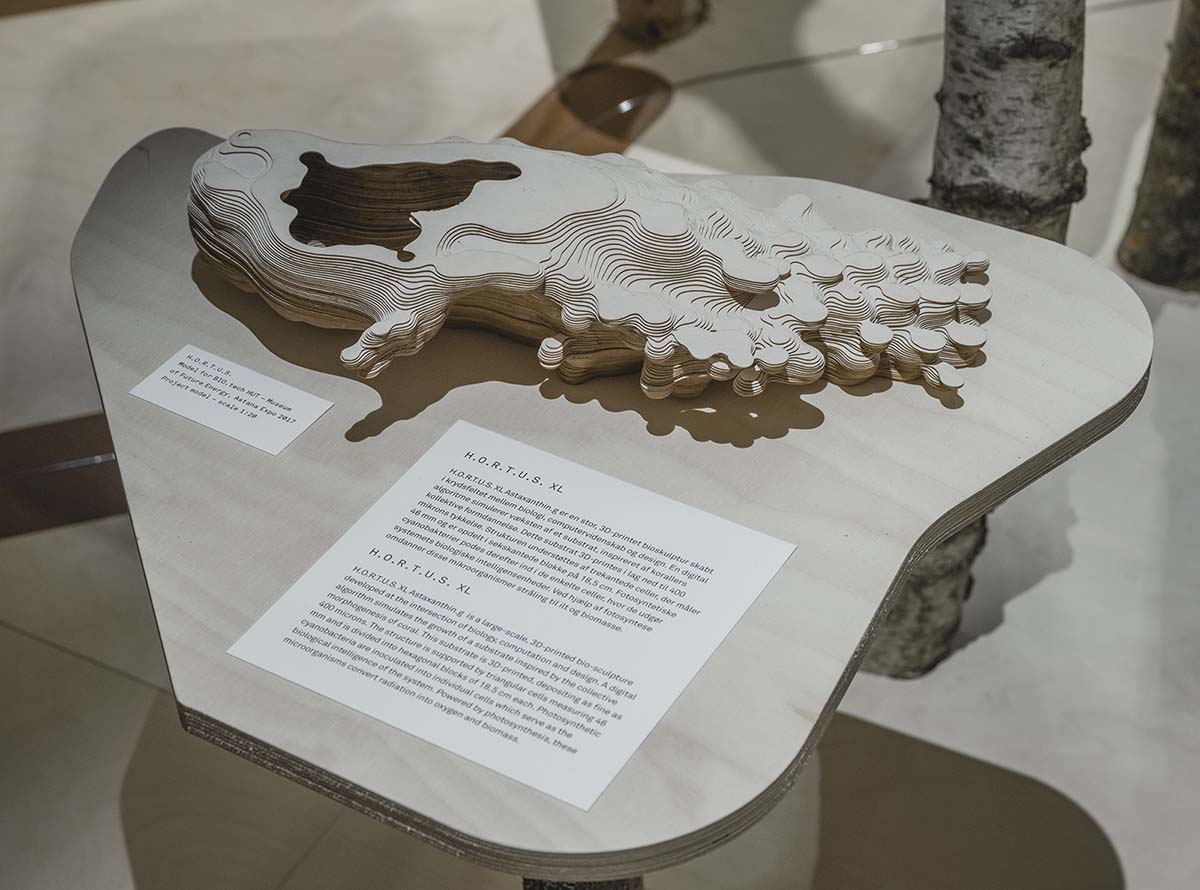
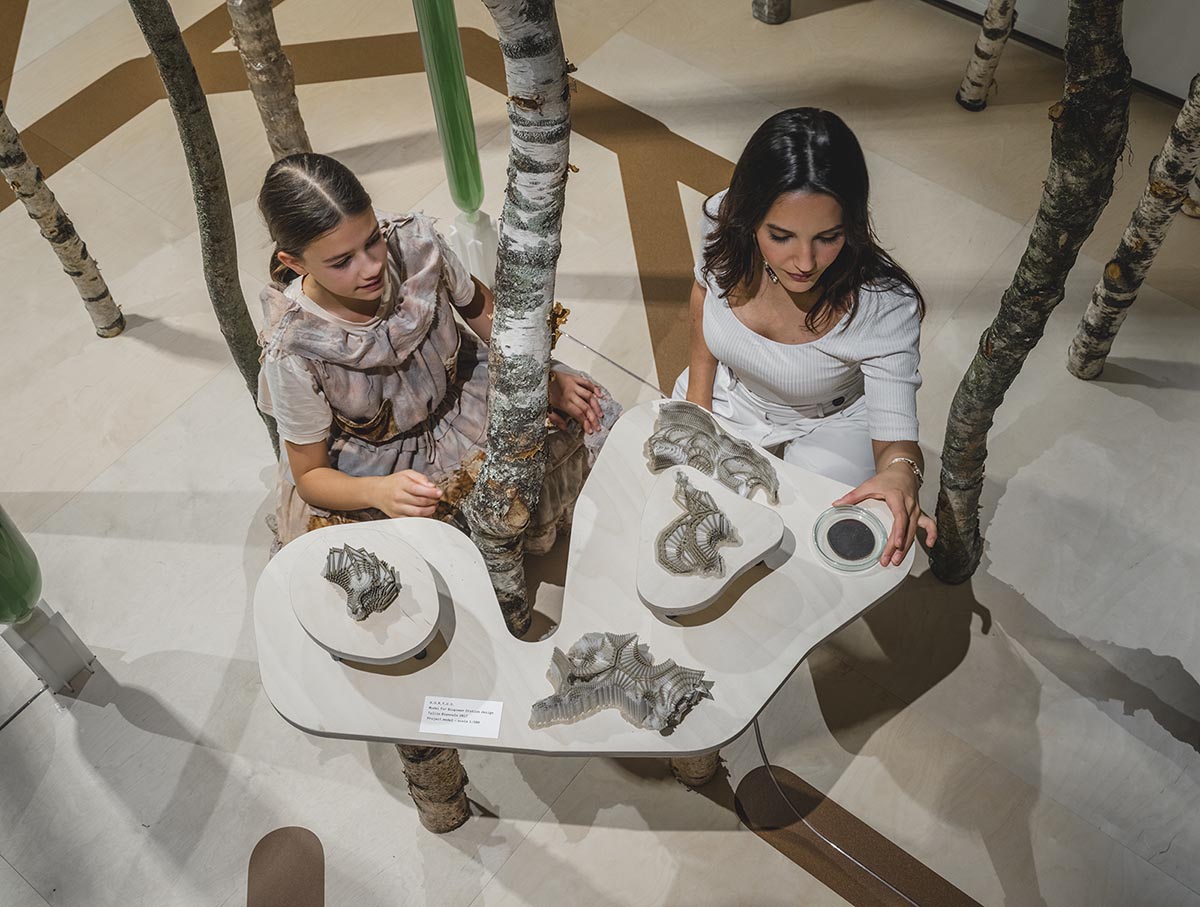
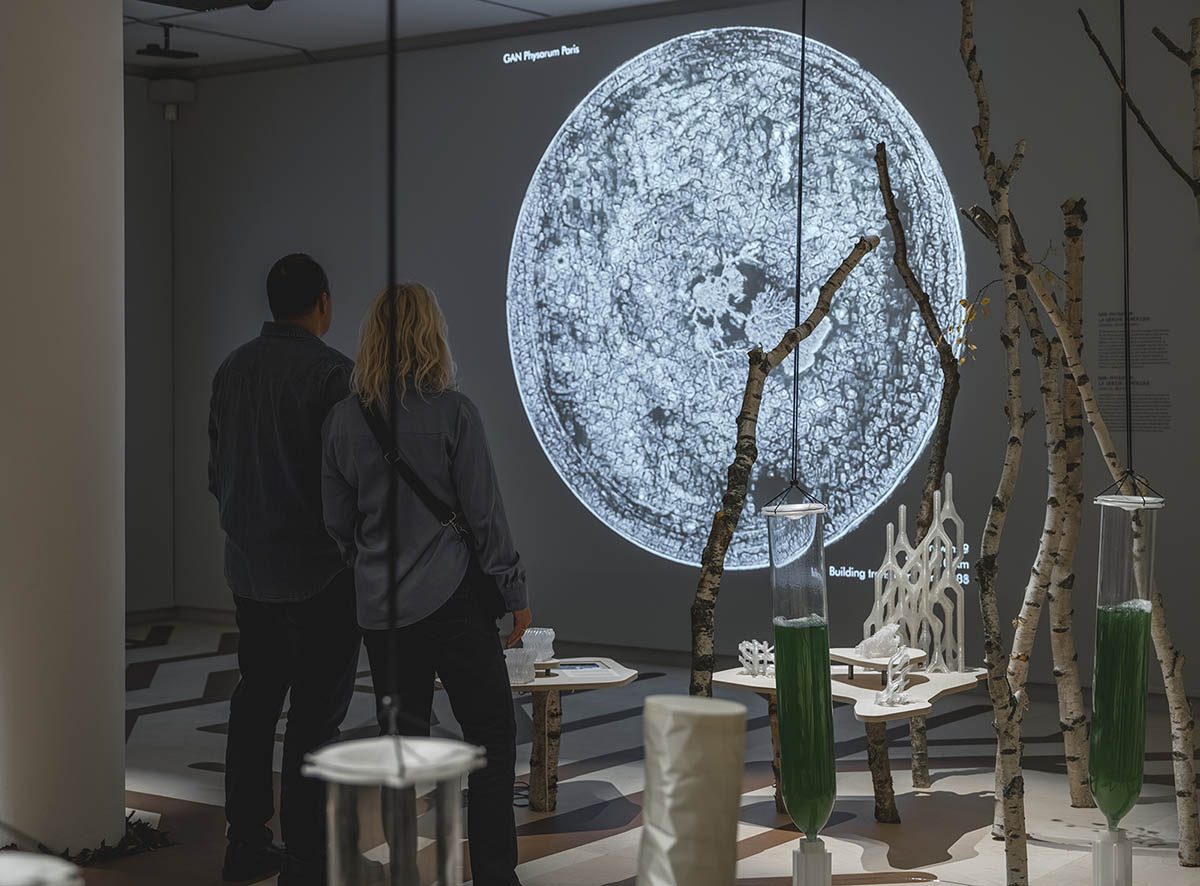
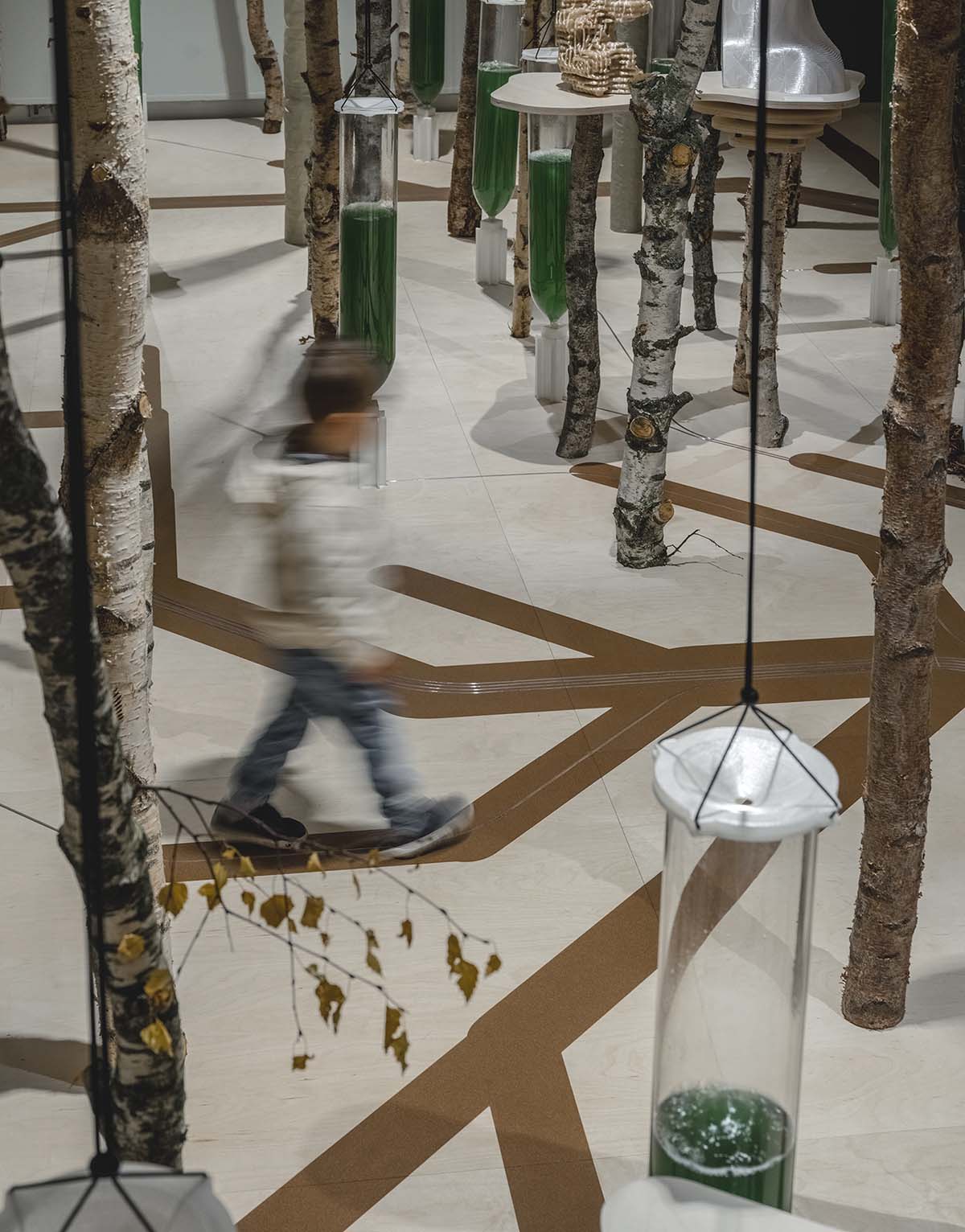
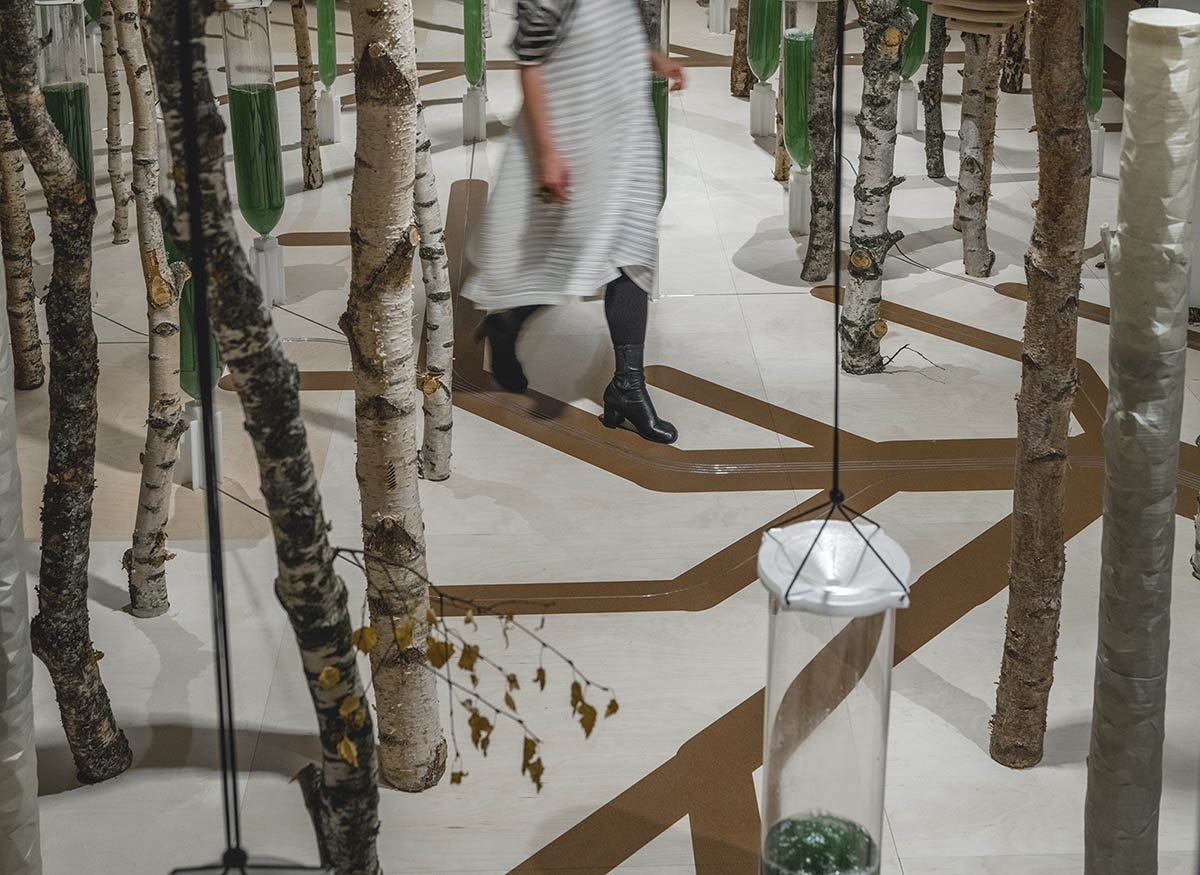
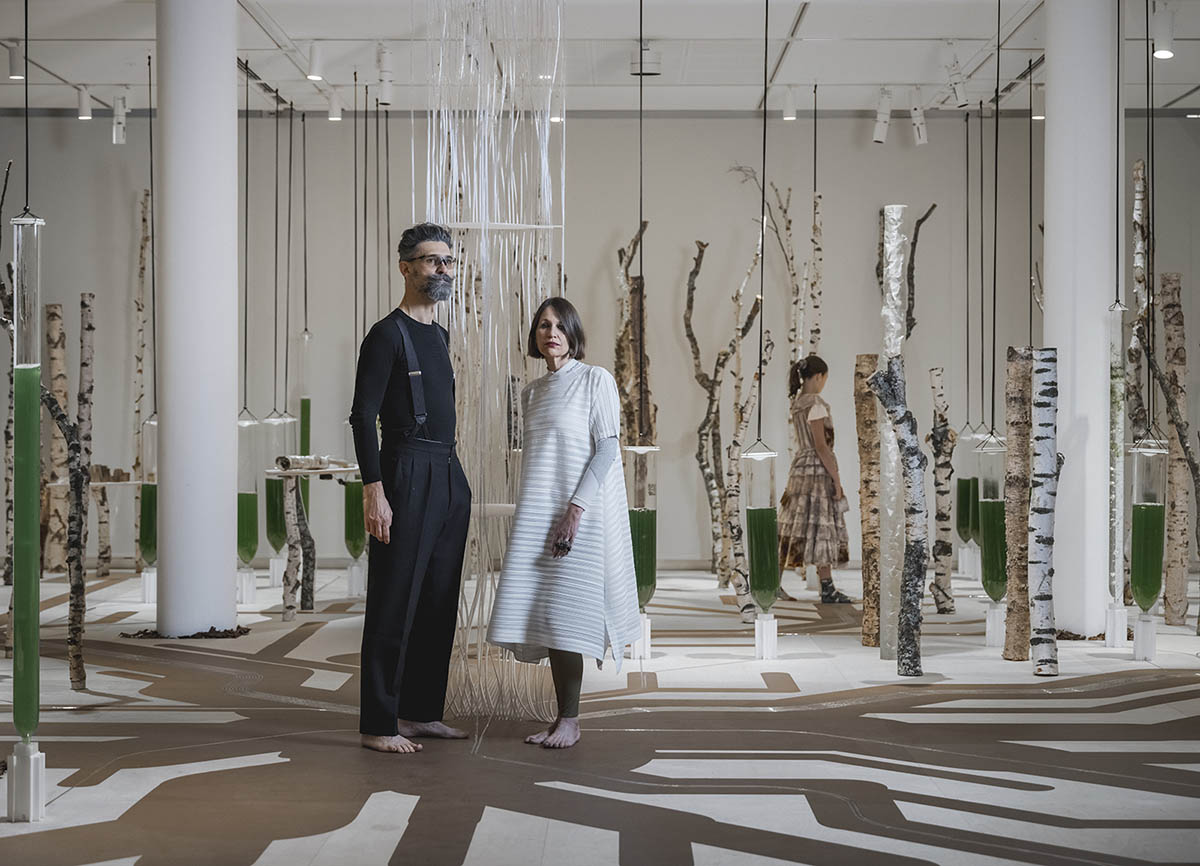
Dr Marco Poletto and Prof Claudia Pasquero, the founders of ecoLogicStudio
ecoLogicStudio created a restorative space for a Swiss consumer healthcare company in Nyon, Switzerland.
In addition, the firm installed an air bubble air-purifying eco-machine at COP26 Climate Conference in Glasgow, United Kingdom. Moreover, the studio created the world’s first biotechnological playground for children to integrate air-purifying micro-algae.
Project facts
Project name: Deep Forest
Exhibition Info: Living Structures (part of Architecture Connecting series)
Dates: 8 November 2024 — 23 March 2025
Location: Louisiana Museum of Modern Art, Denmark
Artist: ecoLogicStudio (Claudia Pasquero, Marco Poletto)
Academic Partners: Synthetic Landscape Lab at Innsbruck University, Urban Morphogenesis Lab at the Bartlett UCL
Project Team: Prof Claudia Pasquero, Dr Marco Poletto with Jasper Zehetgruber, Beyza Nur Armagan, Xiao Wang, Alessandra Poletto
Prototyping Support Team: Konstantina Bikou, Korbinian Enzinger, Francesca Turi, Jonas Wohlgenannt, Marco Matteraglia, Michael Unterberger, Mika Schulz, Felix Humml, Bo Liu.
All images © Rasmus Hjortshøj.
> via ecoLogicStudio
